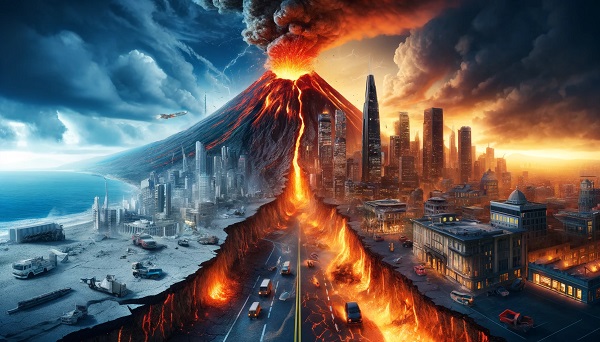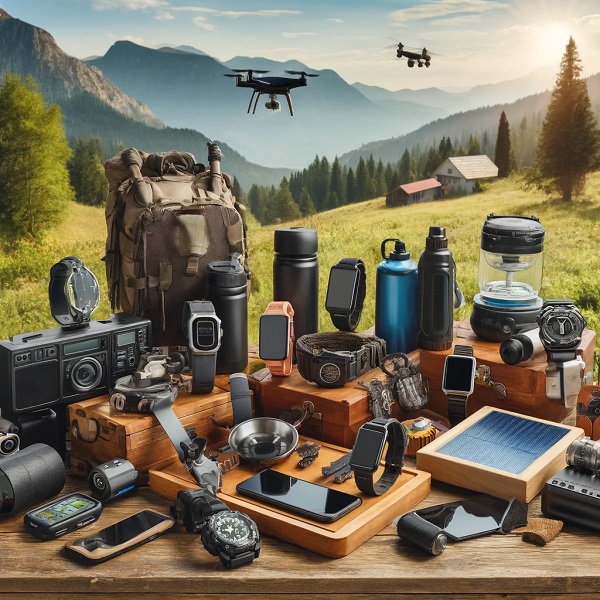
Volcanic vs. Tectonic: Understanding the Earth’s Dynamic Processes
Kay
- 0
Is the Earth below your feet something just there and always there? Well, unless you are standing inside a volcano or over some other region of unusual geology, the Earth beneath your feet is active, energetic and moving around quite a lot. In this article, we explore the dynamics of the deep Earth through the mechanisms of volcanism and tectonics.
Understanding Volcanoes
What is a Volcano?
A volcano is Earth’s pressure valve, controlling the unleashing of internal steam pressure when things get a little too hot underground: the pressure eventually finds its way up through cracks in the crust and erupts onto the surface as a mixture of lava, ash and gases.
Types of Volcanoes
Shield Volcanoes
These are the gentle giants of the volcanic world. Shield volcanoes consist of gently dome-shaped edifices spread out across a wide area built up by the flow of low-viscosity lava – the volcanic equivalent of marathon runners.
Stratovolcanoes
Stratovolcanoes are the divas. High, steep, inclined to pyrotechnics, they’re fed by successive layers of cooling basalt, tephra, pumice and volcanic ash.
Cinder Cone Volcanoes
The volcanic sprinters – cinder cone volcanoes – are smaller, much steeper and explosive eruptions. They’re not so tall but they certainly hit the ball out of the park.
Understanding Tectonics
What are Tectonic Plates?
Visualize the shell of the egg called Earth’s crust cracking up into pieces – tectonic plates – that sit above the semi-fluid asthenosphere and drift over it. These plates crunch and scrape against one another.
Plate Boundaries and Their Types
Divergent Boundaries
This is a place where tectonic plates are actually separating; magma oozes toward the surface, forging new terrestrial real estate, as if in a geological split.
Convergent Boundaries
When plates collide, one might dive under the other – a process known as subduction – and mountains are formed, along with volcanoes.
Transform Boundaries
At these transformation boundaries, the plates slide horizontally past one another, which can lead to earthquake activity: think about the rubbing your hands together at high speed – that’s exactly what the plates are doing.
Volcanic Activity
Causes of Volcanic Eruptions
Volcanoes are also associated with the movement of tectonic plates, where magma can find a way to the surface as plate boundaries diverge or crash together.
Effects of Volcanic Eruptions
Environmental Impact
In addition to shaping landscapes and forming new landmasses, volcanic eruptions can unleash ash and gases that influence weather and climate on a global scale.
Human Impact
Communities living on volcanic slopes can suffer catastrophic loss to lava flows and pyroclastic flows, and they can be blanketed by ash falls. And yet, volcanic soils are among the most productive environments for agriculture.
Tectonic Activity
Ultimately, all tectonic activity is powered by heating from the Earth’s core, as it causes the semi-liquid mantle to flow beneath the plates.
Earthquakes
Earthquakes occur when fault-plane movements in the Earth’s crust are finally released, after weeks, months, or even decades of rumbling. The final movement causes much shaking, and destruction. But at the same time as the released energy causes violence, there is also an Aladdin’s lamp component, releasing pent-up energy that has previously been imprisoned in the stresses in the earthquake zone.
Mountain Building
Plates crashing together can warp and fold up the crust, resulting in mountains – the slowest yet most dramatic of natural movers.
Comparing Volcanic and Tectonic Activities
Key Differences
One is volcanic activity which is basically magma release, and the other one is tectonic activity which is primarily the moving or the pushing of the plates. One is fiery and explosive and the other is slow and grinding.
Similarities
Both processes are driven by the Earth’s internal heat and have dramatic impacts on the Earth’s surface and on human life.
Case Studies
Famous Volcanic Eruptions
Consider Mount Vesuvius in AD 79 or Mount St Helens in 1980.
Significant Earthquakes
To illustrate this force, we need only contrast it with the energy of a large-scale tectonic event. Every day of our lives, pressure builds and releases along the San Andreas fault, which runs the length of California, but we have no inkling of it. Imagine the release of a mere 0.000005 per cent of that energy in a single second. The lives of millions could be ended in an instant. The Japanese experience the forces at work in tectonic processes all the time in their lives, too. As it happens, Japan has an unusually high incidence of tectonic catastrophe, one of which was the 2011 Tōhoku earthquake. In San Francisco in 1906, a seismic slippin a much smaller segment of the Pacific plate could spell disaster. In the 2011 Tōhoku earthquake, the Pacific plate moved northward nearly nine meters and plunged nearly 30 meters in the space of a few seconds
Conclusion
Volcanic and tectonic activity are essential to the complexities of our environment. Once we begin to comprehend these forces of our planet, that are sometimes hidden beneath our feet, we can start to wonder about what keeps our world moving and shaking.
FAQs
What is the most dangerous type of volcano?
The most feared volcano type is the Stratovolcano, notable for its explosive eruptions and potential for pyroclastic flows.
How are volcanic eruptions predicted?
Signs of an approaching eruption are tracked by scientists with seismographs, gas emissions, ground deformation measurements and satellite images.
Can tectonic plate movements be prevented?
No, the Earth’s internal processes are driving tectonic plate movements. There is nothing we can do to stop them.
What are some famous tectonic plates?
Pacific Plate, North American Plate, Eurasian Plate, African Plate
How do volcanic and tectonic activities affect climate?
Volcanic eruptions, for example, can inject ash and gases into the atmosphere causing cooling through the diminishing of direct sunlight and blocking of indirect radiation, as well as longer-term shifts in ocean currents and atmospheric patterns due to tectonic activity.
Samsung Galaxy S21 Samsung Galaxy S21 Samsung Galaxy S21 LG G8 ThinQ Samsung Galaxy A51 Samsung Galaxy S21 iPhone 12 Pro Max Samsung Note 20 Samsung Galaxy A51


